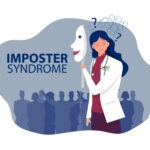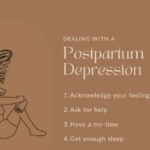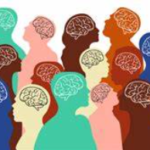The road to understanding and caring for children with autism is not always clear. As a parent or caregiver of a child on the autism spectrum, you are likely familiar with the challenges they face in a society where autism is still misunderstood and often stigmatized.
But what happens when your child also has to navigate trauma and loss on top of the hurdles that come with autism? How can you provide support in a way that promotes healing, both for them and for yourself?
Understanding Autism, Trauma, and Loss
To start, it’s important to grasp the relationship between autism, trauma, and loss. Autism is a developmental condition that affects communication, social interaction, and behavior.
According to the News Agency of Nigeria (NAN), Autism Spectrum Disorder (ASD) is a significant public health issue in Nigeria, with prevalence rates varying across different studies and regions. Research suggests that approximately 1 in every 150 to 160 children—roughly 600,000 individuals—are affected by ASD in the country.
Children on the spectrum often struggle with sensory sensitivities, limited verbal communication, and difficulty in understanding or responding to social cues. In a country like Nigeria, where awareness of autism is still growing, this often means that children are misunderstood or stigmatized, making their emotional and psychological needs even more challenging to address.
Trauma and loss, for children on the spectrum, can take many forms. It’s not just about experiencing the death of a loved one, although that can undoubtedly be devastating.
Loss can also involve the disruption of routines, the loss of a familiar environment, separation from a caregiver, or being misunderstood and rejected by society. These experiences can be incredibly difficult for any child, but for a child with autism, they often manifest in more pronounced behavioral or emotional reactions.
When trauma hits, the typical coping mechanisms that children rely on may not work the same way for children with autism. Behavioral outbursts, withdrawal, or aggression can be signs that your child is struggling to make sense of the loss or the trauma they have encountered.
Navigating Autism in the Nigerian Context
In Nigeria, there is still a long way to go in terms of understanding autism and the unique needs of those on the spectrum. Autism is frequently misunderstood, and many children go undiagnosed or misdiagnosed, leaving them without the support they need.
In a society where traditional views of disability and mental health still prevail, it can be difficult for families to access services and receive the help they need.
There’s also the added challenge of stigma. In many parts of Nigeria, mental health conditions, including autism, are often seen through a lens of shame or misunderstanding. The societal reluctance to discuss mental health or disability further isolates families, making them feel as though they are fighting an invisible battle.
This can be particularly harsh for families already coping with the loss or trauma of a loved one. As a result, children with autism often face double or even triple burdens—first, the stigma surrounding autism, and second, the emotional toll of dealing with trauma and loss.
The Silence Around Grief
In Nigerian culture, grief is not always something that’s openly discussed. Families may feel pressured to maintain composure, especially in the face of tragedy, and children may not be given the space to express their own grief.
For children with autism, who often struggle with verbal expression, this lack of emotional outlets can lead to overwhelming feelings of confusion, anger, or sadness. These emotions can sometimes manifest as challenging behaviors, leaving caregivers to wonder how best to support their child through this difficult time.
Practical Strategies for Supporting Your Child Through Trauma and Loss
Recognizing the Signs of Trauma
The first step in helping your child is to recognize when they are experiencing trauma. For children with autism, trauma doesn’t always look the same as it does for neurotypical children.
They may struggle to express their feelings, so it’s essential to watch for signs of distress, such as increased anxiety, aggression, withdrawal, or a sudden change in routine. Pay attention to changes in their behavior, as these might indicate that they are struggling to process what has happened.
Creating a Safe and Predictable Environment
Children with autism often thrive in structured environments. Predictability helps them feel safe and secure. During times of trauma or loss, maintaining a consistent routine can provide your child with a sense of stability.
Keeping things as normal as possible—while allowing for flexibility when necessary—can help reduce feelings of fear or anxiety. Use visual schedules, daily routines, and calming activities to help them process their emotions.
Enhance Communication
For many children with autism, verbal communication can be a challenge. In times of trauma, communication becomes even more critical. Consider using visual aids, picture exchange communication systems (PECS), or even communication apps on smartphones or tablets to help your child express their feelings.
Allow them the time they need to communicate and find ways to help them understand what’s happening around them.
The Importance of Caregiver Self-Care
Supporting a child through trauma and loss, especially when they have autism, is an emotional and physical toll on parents and caregivers. It is important to recognize when you need help and to take time for yourself.
Caregiver burnout is real, and taking care of your own mental health is vital for your ability to care for your child.
Self-care can take many forms, whether it’s simply taking a break, speaking with a counselor, or seeking emotional support from peers who understand what you’re going through.
Caring for a child with autism who is also experiencing trauma is not easy, and it’s okay to acknowledge that you need help. Building a support network of friends, family, and other caregivers can help you manage the emotional strain and prevent burnout.
Hope and Healing: The Road Ahead
Healing from trauma is not a quick process, and for children with autism, it may take even longer. However, with the right strategies, support systems, and a commitment to understanding both autism and trauma, you can help your child navigate these challenges.
The journey will not be easy, but remember that you are not alone. With resources, guidance, and community support, families can find ways to heal, rebuild, and move forward together.
As you continue to advocate for better resources, policies, and understanding for children with autism, take comfort in knowing that every step forward is progress.
By acknowledging the trauma your child has faced and providing them with the support they need, you are helping to break the cycle of misunderstanding and stigma surrounding autism in Nigeria.
Together, we can create a society where children with autism are not only understood but also given the tools they need to thrive—despite the trauma and loss they may face.



















